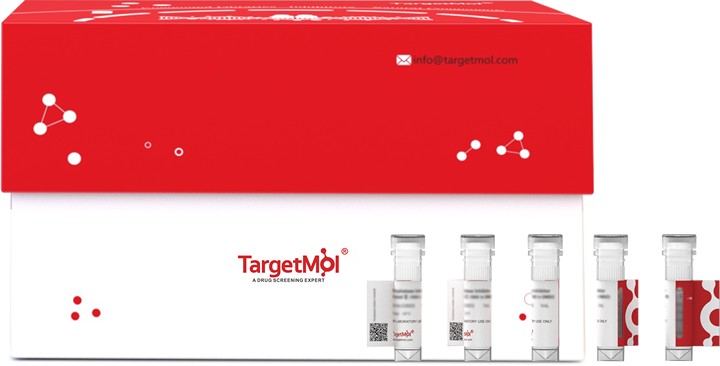 Your shopping cart is currently empty
Your shopping cart is currently empty
RAD23A Protein, Human, Recombinant (His)
Multiubiquitin chain receptor involved in modulation of proteasomal degradation. Binds to 'Lys-48'-linked polyubiquitin chains in a length-dependent manner and with a lower affinity to 'Lys-63'-linked polyubiquitin chains. Proposed to be capable to bind simultaneously to the 26S proteasome and to polyubiquitinated substrates and to deliver ubiquitinated proteins to the proteasome.; Involved in nucleotide excision repair and is thought to be functional equivalent for RAD23B in global genome nucleotide excision repair (GG-NER) by association with XPC. In vitro, the XPC:RAD23A dimer has NER activity. Can stabilize XPC.; (Microbial infection) Involved in Vpr-dependent replication of HIV-1 in non-proliferating cells and primary macrophages. Required for the association of HIV-1 Vpr with the host proteasome.

RAD23A Protein, Human, Recombinant (His)
| Pack Size | Price | USA Warehouse | Global Warehouse | Quantity |
|---|---|---|---|---|
| 5 μg | $75 | 20 days | 20 days | |
| 10 μg | $119 | 20 days | 20 days | |
| 20 μg | $198 | 20 days | 20 days | |
| 50 μg | $297 | 20 days | 20 days | |
| 100 μg | $427 | 20 days | 20 days | |
| 200 μg | $658 | 20 days | 20 days | |
| 500 μg | $1,170 | 20 days | 20 days | |
| 1 mg | $1,830 | 20 days | 20 days |
Product Information
| Biological Activity | Activity has not been tested. It is theoretically active, but we cannot guarantee it. If you require protein activity, we recommend choosing the eukaryotic expression version first. |
| Description | Multiubiquitin chain receptor involved in modulation of proteasomal degradation. Binds to 'Lys-48'-linked polyubiquitin chains in a length-dependent manner and with a lower affinity to 'Lys-63'-linked polyubiquitin chains. Proposed to be capable to bind simultaneously to the 26S proteasome and to polyubiquitinated substrates and to deliver ubiquitinated proteins to the proteasome.; Involved in nucleotide excision repair and is thought to be functional equivalent for RAD23B in global genome nucleotide excision repair (GG-NER) by association with XPC. In vitro, the XPC:RAD23A dimer has NER activity. Can stabilize XPC.; (Microbial infection) Involved in Vpr-dependent replication of HIV-1 in non-proliferating cells and primary macrophages. Required for the association of HIV-1 Vpr with the host proteasome. |
| Species | Human |
| Expression System | E. coli |
| Tag | N-10xHis |
| Accession Number | P54725 |
| Synonyms | UV excision repair protein RAD23 homolog A,RAD23A,HR23A,hHR23A |
| Amino Acid | MAVTITLKTLQQQTFKIRMEPDETVKVLKEKIEAEKGRDAFPVAGQKLIYAGKILSDDVPIRDYRIDEKNFVVVMVTKTKAGQGTSAPPEASPTAAPESSTSFPPAPTSGMSHPPPAAREDKSPSEESAPTTSPESVSGSVPSSGSSGREEDAASTLVTGSEYETMLTEIMSMGYERERVVAALRASYNNPHRAVEYLLTGIPGSPEPEHGSVQESQVSEQPATEAAGENPLEFLRDQPQFQNMRQVIQQNPALLPALLQQLGQENPQLLQQISRHQEQFIQMLNEPPGELADISDVEGEVGAIGEEAPQMNYIQVTPQEKEAIERLKALGFPESLVIQAYFACEKNENLAANFLLSQNFDDE |
| Construction | 1-363 aa |
| Protein Purity | > 90% as determined by SDS-PAGE. |
| Molecular Weight | 45.7 kDa (predicted) |
| Endotoxin | < 1.0 EU/μg of the protein as determined by the LAL method. |
| Formulation | If the delivery form is liquid, the default storage buffer is Tris/PBS-based buffer, 5%-50% glycerol. If the delivery form is lyophilized powder, the buffer before lyophilization is Tris/PBS-based buffer, 6% Trehalose, pH 8.0. |
| Reconstitution | Reconstitute the lyophilized protein in sterile deionized water. The product concentration should not be less than 100 μg/mL. Before opening, centrifuge the tube to collect powder at the bottom. After adding the reconstitution buffer, avoid vortexing or pipetting for mixing. |
| Stability & Storage | Lyophilized powders can be stably stored for over 12 months, while liquid products can be stored for 6-12 months at -80°C. For reconstituted protein solutions, the solution can be stored at -20°C to -80°C for at least 3 months. Please avoid multiple freeze-thaw cycles and store products in aliquots. |
| Shipping | In general, Lyophilized powders are shipping with blue ice. Solutions are shipping with dry ice. |
| Research Background | Multiubiquitin chain receptor involved in modulation of proteasomal degradation. Binds to 'Lys-48'-linked polyubiquitin chains in a length-dependent manner and with a lower affinity to 'Lys-63'-linked polyubiquitin chains. Proposed to be capable to bind simultaneously to the 26S proteasome and to polyubiquitinated substrates and to deliver ubiquitinated proteins to the proteasome.; Involved in nucleotide excision repair and is thought to be functional equivalent for RAD23B in global genome nucleotide excision repair (GG-NER) by association with XPC. In vitro, the XPC:RAD23A dimer has NER activity. Can stabilize XPC.; (Microbial infection) Involved in Vpr-dependent replication of HIV-1 in non-proliferating cells and primary macrophages. Required for the association of HIV-1 Vpr with the host proteasome. |
Dose Conversion
Calculator
Tech Support
| Size | Quantity | Unit Price | Amount | Operation |
|---|

Copyright © 2015-2025 TargetMol Chemicals Inc. All Rights Reserved.



